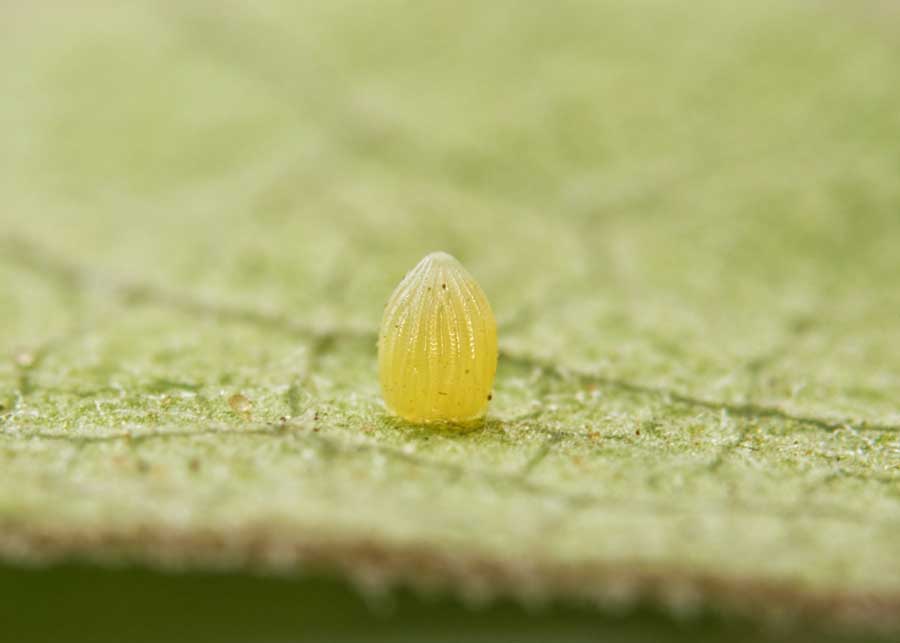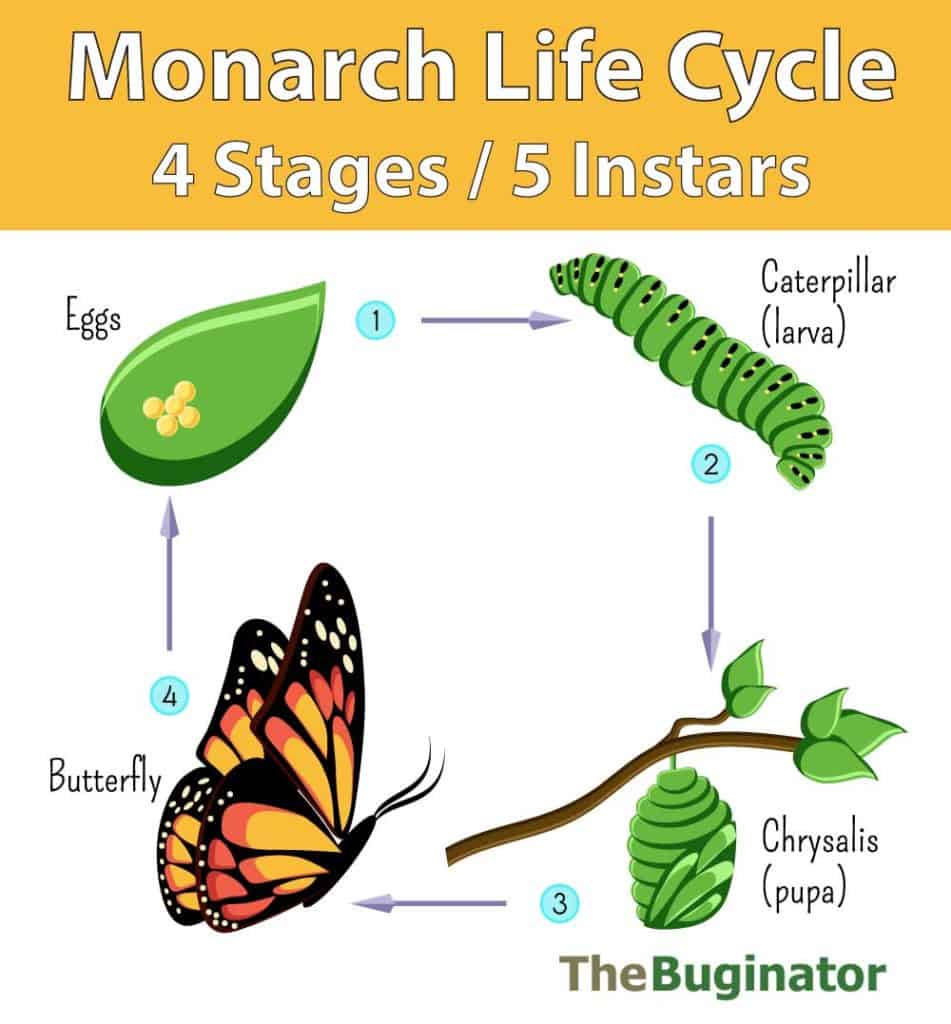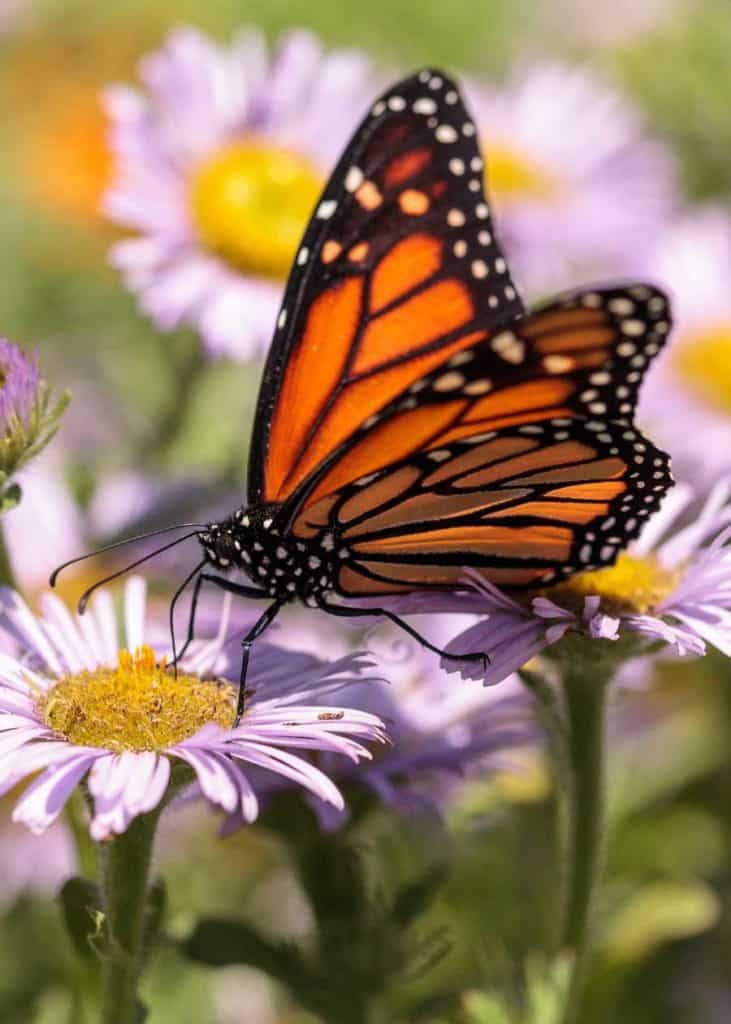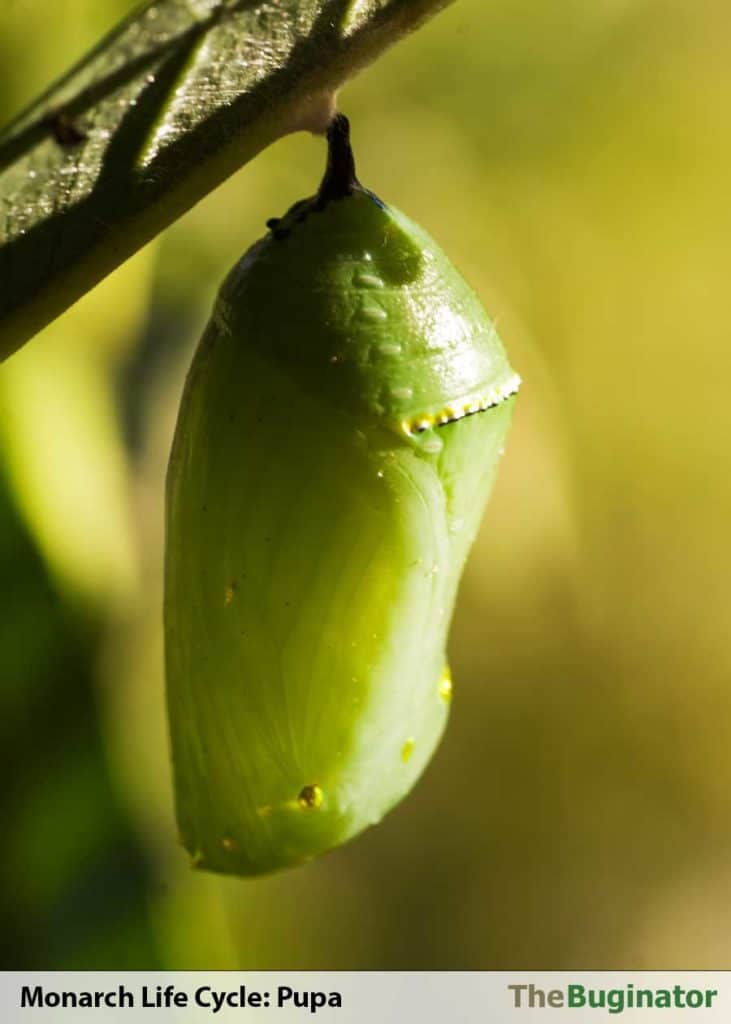If you discovered a tiny cream-white egg on a milkweed leaf, then you have probably found a monarch butterfly egg. In about 4 days (or less), a caterpillar is going to hatch and soon, you will be watching the life cycle of the gorgeous monarch take place.
Raising monarch caterpillars into butterflies is a surprisingly easy process. You’ll need a few inexpensive supplies. And about 4 weeks to see the egg hatch and then reach adulthood.
Here’s what you need to know: life stages, things to do, and what to avoid when raising monarch caterpillars to butterflies.

Table of Contents
Raising Monarch Caterpillars: All 4 Life Stages
There are four stages in a monarch’s life cycle:
- Egg: They hatch about 3-4 days after they are laid.
- Larva (caterpillar): The larva stages last 10-14 days after hatching.
- Pupa: The chrysalis stage also lasts about 10-14 days.
- Adult: Once hatching from the pupa, the monarch is now an adult butterfly.
The full cycle from egg to adult takes about 4 weeks.
For more, check out our Monarch Life Cycle Guide.
Here’s a brief overview of the four stages.

Success Rate in the Wild
In the wild, only about 2 to 5 caterpillars that hatch from the hundreds of eggs a mother monarch lays actually make it to adulthood.
- In the beginning, the little caterpillar (larva) is prone to a lot of harsh elements and may die naturally.
- Predators may eat it.
- Parasites may lay eggs on it.
- It can get a bacterial or viral infection from its environment.
Lots of things can happen to monarch eggs.
So, what can be done to help get that caterpillar to adulthood?

How to Successfully Raise Monarch Caterpillars
Become a foster butterfly parent. Take the leaf with the egg on it and raise the caterpillar that hatches from it indoors. It isn’t difficult.
Check out our guide to the supplies you will need first. Supplies for raising monarch caterpillars. The supplies aren’t expensive but are very important for successfully raising monarch caterpillars.
4 Things to Remember When Raising Monarch Caterpillars
There are a few key points that must be remembered when raising monarch caterpillars.
The most important things to remember:
- Never let moisture build up in the container
- Keep the container clean
- Provide fresh leaves every day
- Clean the frass (poop) out every day
If you can remember these things, then you should have a butterfly completing its life cycle in a month’s time!
Once you’ve got your supplies ready then you are set to go.
Hatch and Raise Monarch Butterflies (Video Guide)
Here is a great video by Ellsey Kay, showing her process of finding, hatching, and raising monarch butterflies.
She also filmed a timelapse of the hatching and growth process.
9 Tips for Raising Monarch Caterpillars
Knowing some basic facts is useful when raising monarchs.
- A young monarch caterpillar doesn’t eat much. One leaf is about all it will eat but be sure the leaf is fresh.
- Cleaning out the frass (poop) is important. Old frass can get moldy fast and mold is unhealthy for a caterpillar.
- Be sure the leaf you give is from a milkweed plant that has had no pesticides added to it or around it! Even a small amount of pesticide can kill your caterpillar!
- Monarch caterpillars remain in the larva stage for about two weeks. They will eat and poop and eat and poop and eat and poop until they get to be about 2″ long.
- Your caterpillar will suddenly stop eating and seem to be dead or just resting. Don’t worry when this happens. Your caterpillar is probably getting ready to molt (shed its skin). This can take 24 hours or more. The caterpillar will begin eating again soon. Just give it time. And leave it alone during this time, it will soon begin to move again when it is ready! Patience, patience, and remember, don’t touch!
- Soon, it will be time for the caterpillar to pupate. This is when the larva is about 2″ long. Put a square of toilet tissue at the top of the container. This will provide something for the monarch to pupate on. Monarchs pupate hanging upside down. The caterpillar will form a ‘J’ by making a silk pad onto the toilet tissue square. When this happens, eating will stop.
- Don’t move or touch the container. This is a time that is when the caterpillar will go through its last molt. It is fascinating to watch if you are able to see it! The last thing you will actually find in the container will be the exuvia containing the head capsule (you can actually see the caterpillar’s head!). Sometimes this will be connected to the chrysalis.
- A gorgeous green chrysalis will soon be on your toilet tissue. It will look like a jade jewel. Two weeks will go by. And during that time, your pupa is undergoing metamorphosis. The caterpillar ‘dissolves’ into a liquid where it is changing completely into its butterfly shape. A butterfly goes through complete metamorphosis. You will be able to see its wings within ten to twelve days.
- It is a good idea to go ahead and take the tissue out of the small container and place it into a larger container at this time. Tape the tissue into a larger jar or a screened area. This will permit the butterfly space to spread and dry its wings when it ecloses.
Here are some more monarch-raising tips by AERCMN (Animal Emergency and Referral Center of Minnesota).

Does Raising Monarch Caterpillars Actually Help?
Some gardeners like to raise monarch caterpillars to enjoy the process. And to educate their kids about the amazing process.
But is captive rearing and breeding a good solution for conserving monarchs? According to Xerces.org, not really. There are more effective and sustainable methods.
This isn’t to say that monarch caterpillars shouldn’t be raised at home. Xerces includes 8 ways to rear monarchs responsibly (link in the previous paragraph).
More reading: Check out our full Monarch Guide
Your Turn
Congratulations! Hopefully, by this point, you have successfully raised a monarch caterpillar to adulthood. How did it go for you? Have a tip to share, or maybe a question? I would love to hear from you in the comments!
- About the Author
- Latest Posts
Dena Haines is a founder and writer at My Monarch Guide. And is working to make it the best resource for raising and enjoying monarch butterflies.
She also blogs about travel at Storyteller.Travel and photography at Storyteller Tech. Dena is a partner at Storyteller Media, a publishing company she runs with her husband, Bryan.
